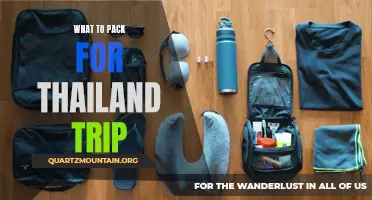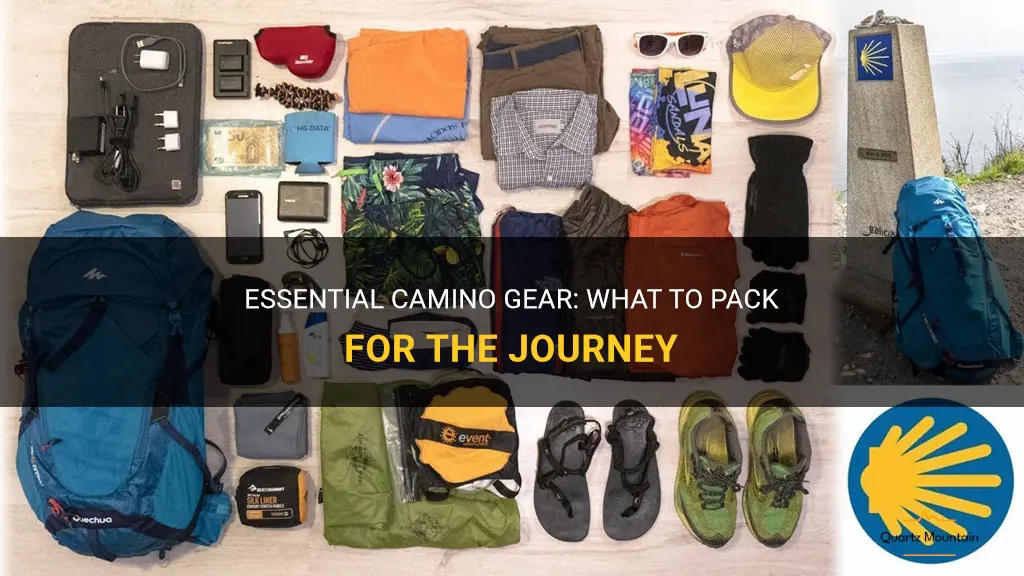
Embarking on the Camino de Santiago is a transformative experience, a journey that not only tests your physical endurance but also challenges you mentally and emotionally. As you set foot on this ancient pilgrimage route, it's crucial to be prepared with the right gear to ensure a successful and comfortable journey. In this guide, we will explore the essential Camino gear you need to pack for your pilgrimage, so you can focus on the profound spiritual and cultural journey that awaits you. From sturdy hiking boots to lightweight sleeping bags, we have got you covered every step of the way. So, lace up your boots, adjust your backpack, and let's dive into the essentials for your unforgettable Camino adventure.
| Characteristics | Values |
|---|---|
| Backpack | 20L-40L |
| Sleeping bag | 3-Season |
| Hiking boots | Waterproof |
| Hiking socks | Moisture-wicking |
| Clothing | Quick-drying |
| Rain jacket | Waterproof |
| Hat | Sun protection |
| Sunglasses | UV protection |
| Water bottle | Lightweight |
| Snacks | Non-perishable |
| First aid kit | Essential items |
| Toiletries | Travel-sized |
| Money | Euros |
| Passport | Identification |
| Mobile phone | Useful apps |
| Guidebook | Camino route |
| Walking sticks | Adjustable height |
What You'll Learn
- What are essential items to pack for the Camino de Santiago?
- How many changes of clothes should I pack for the Camino?
- Are hiking boots necessary, or can I wear trail running shoes?
- What items should I bring to protect myself from the weather?
- Is there a recommended type of backpack for the Camino, and what size should I get?

What are essential items to pack for the Camino de Santiago?
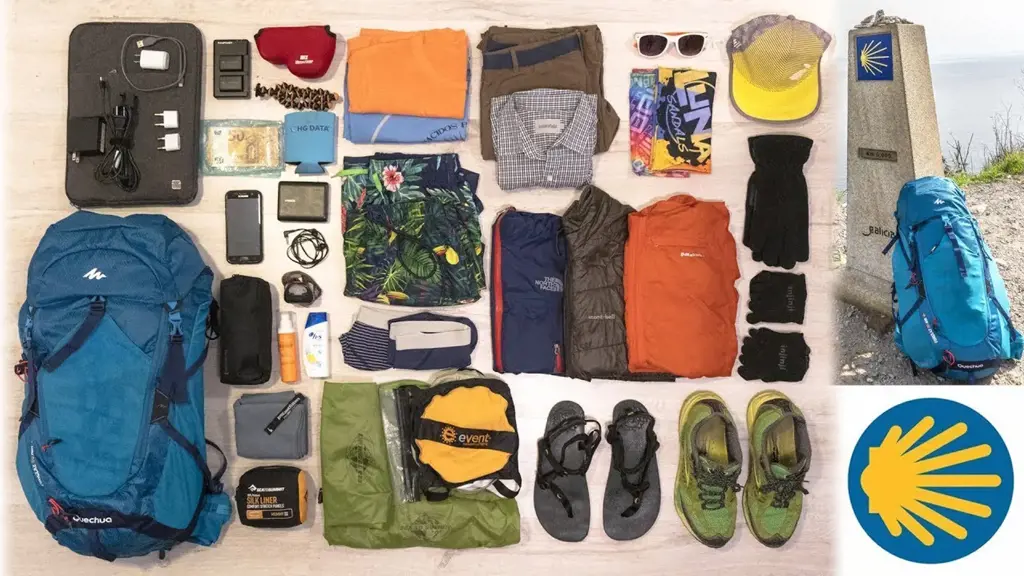
The Camino de Santiago is a popular pilgrimage route in Europe that attracts thousands of travelers each year. Whether you're planning to walk the entire route or just a portion of it, it's important to pack essential items to ensure a comfortable and successful journey. In this article, we will discuss the essential items you should consider packing for the Camino de Santiago.
- Comfortable and sturdy shoes: Your choice of footwear is perhaps the most important item to consider when preparing for the Camino. You'll be walking long distances, sometimes for several weeks, so investing in a pair of comfortable and sturdy hiking shoes is crucial. Make sure to break them in well before your journey to avoid blisters and discomfort on the trail.
- Clothing: Pack lightweight, moisture-wicking clothes that are suitable for different weather conditions. Opt for layers so you can easily adjust your clothing based on the temperature. A good rule of thumb is to pack a couple of quick-drying t-shirts, a long-sleeved shirt, a lightweight jacket or fleece, a waterproof poncho or jacket, a hat, and a pair of comfortable walking shorts or pants. Don't forget to include a few pairs of good-quality socks to prevent blisters.
- Backpack: Choose a lightweight, well-fitting backpack that is large enough to carry all your essentials but not too heavy to become a burden. Look for a backpack with a comfortable waist strap and adjustable shoulder and chest straps for better weight distribution. Make sure it has enough compartments and pockets for easy organization of your belongings.
- Sleeping bag: As you will be staying in various accommodations along the Camino, it's necessary to have a lightweight sleeping bag that is suitable for the expected temperatures. Look for a sleeping bag that is easy to pack and provides enough insulation for your comfort.
- Toiletries and personal items: Include your essential toiletries such as a toothbrush, toothpaste, soap, shampoo, and a towel. Pack travel-sized items to save space and weight in your backpack. Additionally, bring a small first aid kit with band-aids, blister treatment, pain relievers, and any necessary prescription medication.
- Navigation tools: While the Camino is generally well-marked, it's still a good idea to bring a compass, a detailed map or guidebook, and a GPS device or smartphone with a reliable offline maps app. These tools will help you stay on track and avoid getting lost.
- Snacks and water: Carry a water bottle or hydration bladder to stay hydrated throughout the journey. Additionally, pack some lightweight and high-energy snacks such as nuts, energy bars, dried fruits, and electrolyte packets. These will provide you with quick bursts of energy when needed.
- Money and identification: Bring some cash or a credit card for emergencies and to cover expenses along the way. Also, carry your identification documents like your passport or ID card, as some accommodations may require them for check-in.
- Electronics: If you wish to document your journey or stay connected with loved ones, consider bringing a lightweight camera or smartphone with a good camera. Don't forget to pack a charger and any necessary adapters.
- Miscellaneous items: Remember to pack a lightweight and quick-drying travel towel, a small sewing kit for any clothing repairs, a headlamp or flashlight for walking in the dark, earplugs for a good night's sleep, and a journal or notebook to jot down your thoughts and experiences.
It's important to note that the Camino de Santiago is a personal journey, and everyone's packing list may differ slightly. Consider the weather forecast and your personal needs when deciding what to bring. However, keeping these essential items in mind will help ensure a comfortable and successful pilgrimage along the Camino de Santiago. Buen Camino!
Essential Items to Pack for a Relaxing Vacation at a Mexico Resort
You may want to see also

How many changes of clothes should I pack for the Camino?
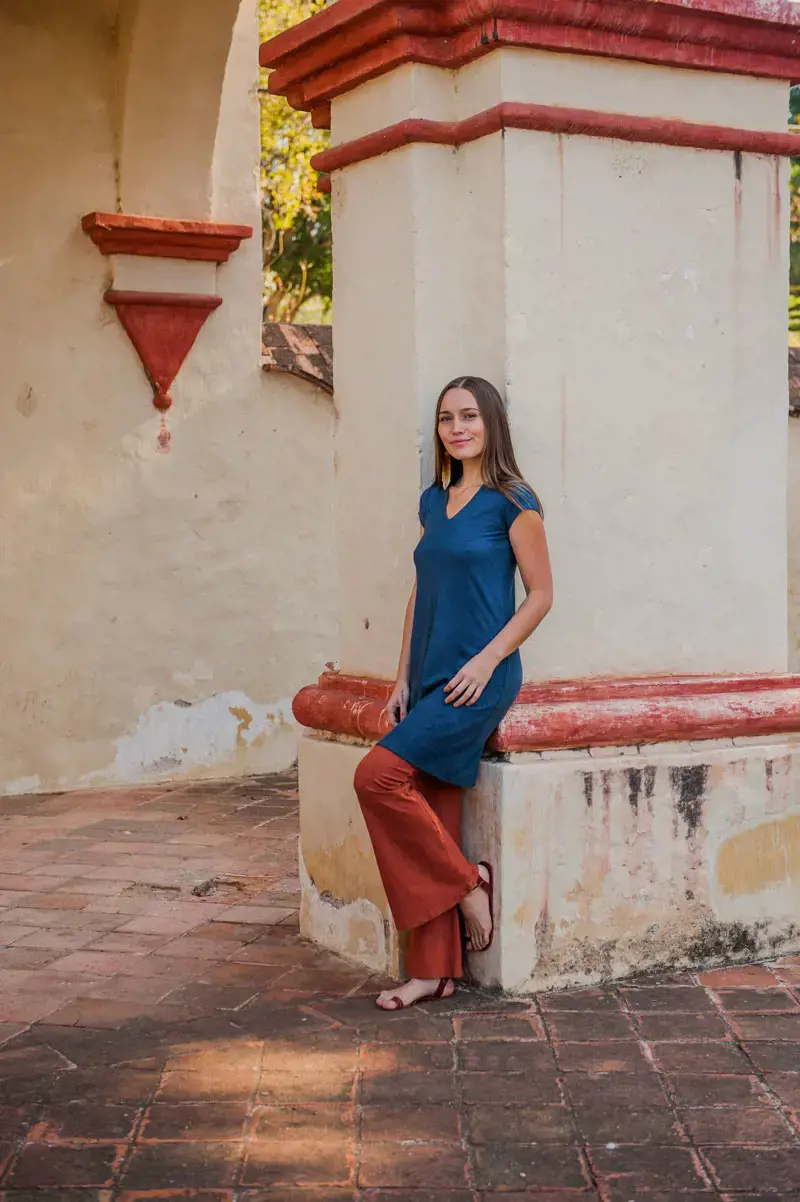
When preparing for the Camino, one of the most common questions is how many changes of clothes should be packed. While there is no definitive answer, the number of changes can vary depending on personal preference, weather conditions, and the length of the journey.
Consider the weather conditions:
The weather along the Camino de Santiago can vary greatly depending on the time of year and the region you are walking through. It is important to research the average temperatures and weather patterns for the specific time and location of your journey. If you are walking during the summer months, you may require fewer clothing changes as the weather tends to be warmer and drier. However, if you are walking during the colder months, you may need more layers and changes of clothes to stay warm and dry.
Length of the journey:
Another factor to consider is the length of your Camino journey. If you are walking for a shorter period, such as a week or two, you may be able to pack fewer changes of clothes. However, if you are embarking on a longer journey, such as the full Camino Frances, which takes about a month, you may need more changes of clothes to ensure you have enough clean and comfortable options throughout your trip.
Plan for laundry facilities along the route:
Most towns and villages along the Camino have laundry facilities, whether it be in the form of coin-operated machines or local laundromats. Take into account the availability of these facilities when determining how many changes of clothes to pack. If you plan to do laundry regularly, you may be able to pack fewer changes of clothes and simply wash them as needed. However, if you prefer to have more clothing options readily available or if laundry facilities are scarce along your chosen route, it may be wise to pack more changes of clothes.
Consider the weight of your backpack:
Remember that every item you pack adds weight to your backpack, and unnecessary weight can make your journey more challenging. Evaluate the size and weight of the clothes you plan to pack and consider the trade-off between having additional changes of clothes and carrying a heavier backpack. It is generally recommended to pack lightweight and quick-drying clothing items to minimize weight and optimize comfort.
Examples of a possible clothing packing list:
Here is an example of a packing list for the Camino, which includes a variety of clothing items:
- 2-3 pairs of comfortable walking pants or shorts
- 2-3 quick-drying t-shirts or tops
- 1-2 lightweight long-sleeve shirts or thermal layers
- 1-2 warm layers, such as a fleece or lightweight jacket
- 1-2 pairs of walking socks
- 1 pair of comfortable walking shoes or boots
- 1 pair of sandals or flip-flops for rest days
- 1 lightweight rain jacket or poncho
- 1 hat or cap for sun protection
- 1 pair of sunglasses
- 1 small towel or travel towel
- Undergarments and sleepwear as needed
- A small supply of laundry detergent for handwashing
- Spare shoelaces, sewing kit, and other small repair items.
Remember, this is just an example and the number of changes of clothes can vary depending on your personal preferences and the factors mentioned above. It is important to pack what you feel comfortable carrying and what you believe will be sufficient for your journey.
In conclusion, the number of changes of clothes to pack for the Camino de Santiago is a personal decision that depends on factors such as weather conditions, the length of your journey, and the availability of laundry facilities. Consider these factors, evaluate the weight of your backpack, and pack enough clothes to ensure comfort and cleanliness for the duration of your adventure.
The Essential Packing Guide for Your Trip to Ecuador
You may want to see also

Are hiking boots necessary, or can I wear trail running shoes?
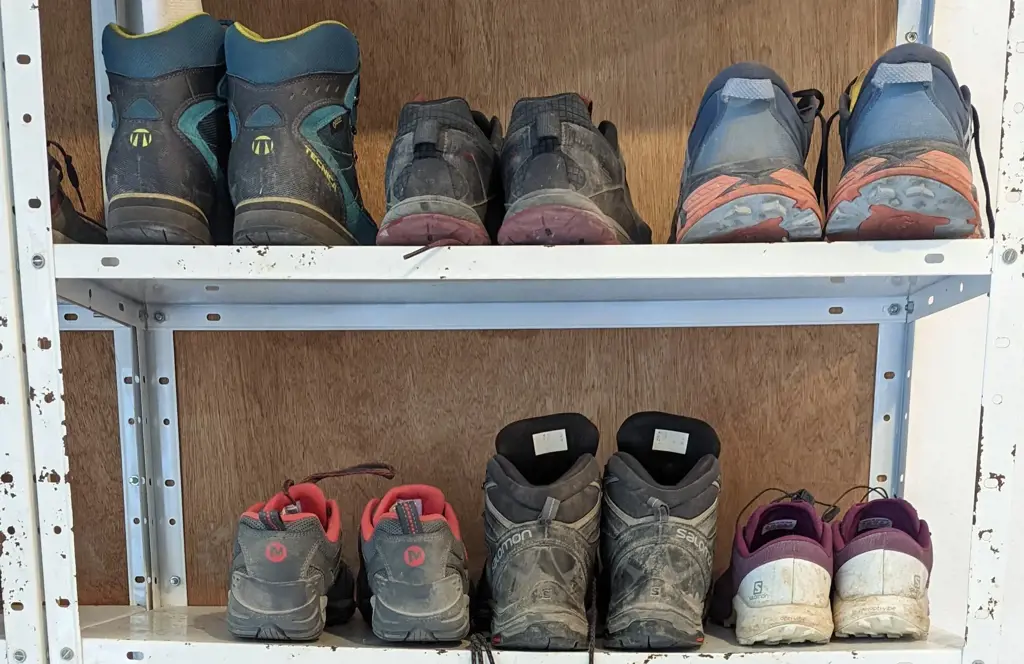
When it comes to tackling outdoor adventures on rugged terrain, choosing the right footwear is essential. Hiking boots and trail running shoes are two popular options for outdoor enthusiasts. While both can provide support and protection, deciding which one to wear depends on several factors.
One of the main considerations when choosing between hiking boots and trail running shoes is the level of support needed. Hiking boots typically offer more ankle support and stability due to their higher cut and stiffer construction. This feature is particularly important when traversing uneven and rocky terrain, as it helps prevent ankle injuries. On the other hand, trail running shoes are designed for more agility and flexibility, making them ideal for runners who want to cover rough ground quickly. If you plan to venture into challenging hiking trails, hiking boots may be the safer option.
Another factor to consider is the type of trail or terrain you will be navigating. Hiking boots are better suited for rugged and unpredictable trails, such as those with loose rocks, slippery surfaces, or steep inclines. The durable outsoles on hiking boots provide excellent traction, ensuring a firm grip even on slippery surfaces. Trail running shoes, on the other hand, are more appropriate for well-maintained trails that are relatively even and free from obstacles. These shoes are lighter and more breathable, making them comfortable for extended periods of running or hiking on moderate terrain.
Lastly, personal preference and comfort play a significant role in the decision-making process. Some people find hiking boots too heavy and bulky, while others appreciate the extra protection they provide. Trail running shoes are generally lighter and more flexible, allowing for a more natural stride. However, they may not provide the same level of foot and ankle support as hiking boots. It is crucial to try on both options and walk around in them to determine which one feels more comfortable and suits your needs best.
Ultimately, the choice between hiking boots and trail running shoes comes down to the specific activity and terrain you will encounter. If you plan on hiking through rough, uneven terrain or carrying a heavy backpack, hiking boots are recommended for their superior support and protection. However, if you prefer covering long distances quickly on well-maintained trails, trail running shoes may be a more suitable option. Additionally, it is always a good idea to invest in high-quality socks and insoles that offer extra cushioning and support, regardless of the footwear you choose.
In conclusion, hiking boots and trail running shoes both have their advantages and disadvantages. Ultimately, the decision should be based on the specific requirements of your outdoor adventure. Whether you opt for the rugged support of hiking boots or the lightweight agility of trail running shoes, proper footwear is essential to ensure comfort, safety, and enjoyment during your outdoor activities.
The Essential Wardrobe: What Clothes to Pack for an MSC Cruise
You may want to see also

What items should I bring to protect myself from the weather?
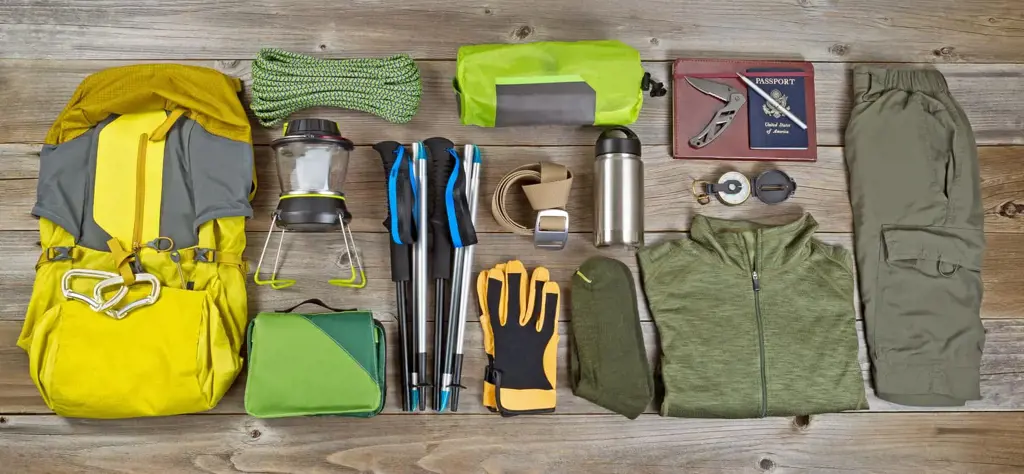
When heading outdoors, it is crucial to be prepared for whatever weather you might encounter. Whether you're going hiking, camping, or simply taking a leisurely stroll, having the right gear can make all the difference. Here are some essential items to bring to protect yourself from the weather.
- Clothing layers: Layering your clothing is key to staying comfortable in changing weather conditions. Start with a moisture-wicking base layer that helps keep you dry by pulling sweat away from your skin. Over that, add a insulating mid-layer to trap body heat. Finally, top it off with a waterproof and windproof outer layer to protect you from rain and wind.
- Waterproof footwear: When it comes to protecting your feet, waterproof footwear is a must. Whether it's rain, puddles, or wet terrains, having waterproof shoes or boots will keep your feet dry and prevent discomfort that can arise from wet feet.
- Waterproof and windproof outerwear: Investing in a quality waterproof and windproof jacket is essential. Look for materials like Gore-Tex or eVent that provide superior waterproofing while allowing moisture to evaporate, keeping you dry from both rain and sweat. A hood is also important to protect your head and neck from rain and wind.
- Hat and gloves: Depending on the weather, a hat and gloves can provide crucial protection. In cold, windy conditions, a warm hat can help prevent heat loss through your head. Gloves, especially waterproof ones, will keep your hands dry and warm, preventing frostbite and discomfort.
- Sunglasses and sunscreen: Even on cloudy days, the sun's UV rays can still damage your skin and eyes. Wear sunglasses with UV protection to shield your eyes from harmful rays. Don't forget to apply sunscreen with a high SPF to exposed skin, even on overcast days.
- Backpack cover: If you're carrying a backpack, a waterproof cover is a simple yet effective way to protect your belongings from getting wet. These covers slip over your backpack and keep your items dry, even in heavy rain or snow.
- Emergency shelter: Depending on the location or the duration of your outdoor adventure, it's always a good idea to bring an emergency shelter. This could be a lightweight tarp or a bivy sack that can provide protection from rain, wind, and even cold temperatures if you find yourself stranded or unexpectedly spending the night outdoors.
Remember, weather can change quickly, so it's important to be prepared. Knowing what items to bring will not only keep you comfortable but also safe during your outdoor excursions. Always check the weather forecast before heading out and adjust your gear accordingly. By taking these precautions, you can enjoy your outdoor activities regardless of the weather conditions.
Essential Items to Pack in a Tornado Survival Bag
You may want to see also

Is there a recommended type of backpack for the Camino, and what size should I get?
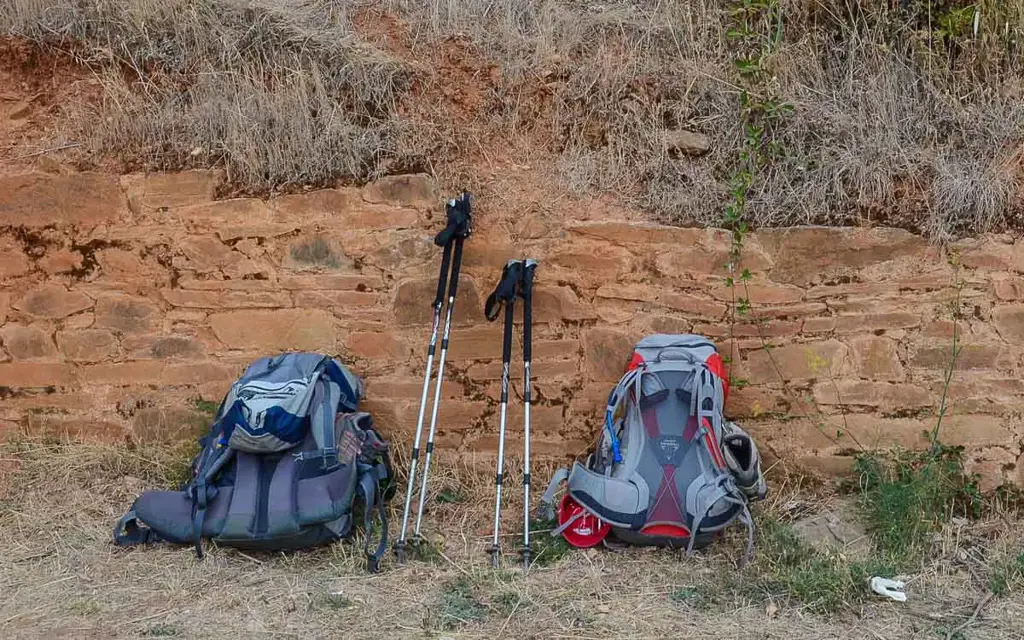
When it comes to walking the Camino de Santiago, choosing the right backpack is crucial. A comfortable and well-fitted backpack can make your journey much more enjoyable, while an ill-fitting or inappropriate backpack can lead to discomfort and pain. In this article, we will discuss the recommended type of backpack for the Camino and provide guidance on the ideal size to suit your needs.
There are several types of backpacks available, such as internal frame and external frame packs. However, for the Camino, it is recommended to choose an internal frame backpack. This type of backpack has a lightweight and flexible frame built into the back panel, providing stability and support without adding excessive weight. Internal frame backpacks also offer better maneuverability and are more suited to the varied terrain found on the Camino trails.
When it comes to size, the ideal backpack capacity will depend on your personal needs and preferences. Typically, a 30 to 40-liter backpack is sufficient for most pilgrims. This size allows you to carry essential items such as clothing, toiletries, a sleeping bag, and a lightweight sleeping pad. It is important to pack only what you truly need to keep the weight of your backpack manageable.
Before purchasing a backpack, it is recommended to visit a specialized store to get professionally fitted. An experienced salesperson can measure your torso length and recommend the appropriate backpack size. It is essential to ensure that the backpack fits comfortably and distributes weight evenly across your shoulders, hips, and back. A poorly fitted backpack can lead to discomfort, chafing, and even injuries.
Additionally, consider the backpack's features and compartments. Look for a backpack with easy-access pockets for storing frequently used items such as snacks, a water bottle, and a guidebook. Compression straps are also useful for minimizing bulk and securing your belongings. Some backpacks even come with a detachable daypack, which can be handy for short excursions or exploring towns along the Camino.
Ultimately, the best backpack for the Camino is one that suits your individual needs and preferences. It is advisable to try on different models, test their weight distribution, and consider your packing style before making a final decision.
To further assist you in choosing the right backpack, let's consider the experiences of Camino pilgrims. Many pilgrims recommend investing in a high-quality backpack that is durable and comfortable. They emphasize the importance of finding a backpack with adjustable shoulder straps and a supportive hip belt. The shoulder straps should be padded and adjustable to suit your body shape, while the hip belt should sit snugly around your hip bones and transfer weight to your legs.
Some experienced pilgrims also recommend considering the weight of the backpack itself. A lightweight backpack can make a significant difference, especially when covering long distances day after day. Look for a backpack made from lightweight and durable materials, such as nylon or ripstop fabric.
Here are a few examples of backpacks that are popular among Camino pilgrims:
- Osprey Exos 38: This backpack is known for its lightweight design and excellent ventilation system, making it ideal for warm weather walking.
- Gregory Zulu 40: With its adjustable suspension system and multiple pockets, this backpack offers versatility and comfort for long-distance hiking.
- Deuter Aircontact Lite 45+10: This backpack provides ample storage space and a supportive back system, making it a popular choice among those who prefer a larger pack.
Remember, choosing the right backpack is a personal decision, and what works for one person may not work for another. Always try on different models, consider your needs, and seek advice from knowledgeable professionals to ensure a comfortable and enjoyable Camino experience.
Essential Items for Female Travelers Packing for Hawaii
You may want to see also
Frequently asked questions
When packing for the Camino de Santiago, it is important to prioritize items that are lightweight, functional, and versatile. Some essential items to consider packing include a comfortable and sturdy pair of walking shoes or hiking boots, moisture-wicking socks, quick-drying and breathable clothing, a lightweight and compact sleeping bag, a lightweight backpack, a refillable water bottle, a hat and sunglasses for sun protection, sunscreen, a first aid kit, a lightweight towel, and toiletries. Additionally, it is recommended to bring a guidebook or map, a walking stick, earplugs, and a small amount of cash for emergencies.
The number of clothing changes to pack for the Camino de Santiago will depend on individual preferences and the specific duration of the journey. However, it is generally recommended to pack at least two sets of moisture-wicking and quick-drying clothing, including shirts, pants or shorts, and undergarments. This allows for one set to be worn while the other is being washed and dried. Additionally, it is advised to pack a lightweight and waterproof jacket or rain poncho, as weather conditions along the route can be unpredictable.
Yes, it is highly recommended to bring a sleeping bag and backpack for the Camino de Santiago. A lightweight and compact sleeping bag is essential for overnight accommodations along the route, as some albergues (hostels) may not provide bedding or may require an additional fee for sheets and blankets. Additionally, a properly fitted backpack is necessary for carrying personal belongings, clothing changes, toiletries, water bottle, snacks, and any other necessities. It is recommended to choose a backpack with adjustable straps and ample storage space, but also lightweight and comfortable enough for long days of walking.



